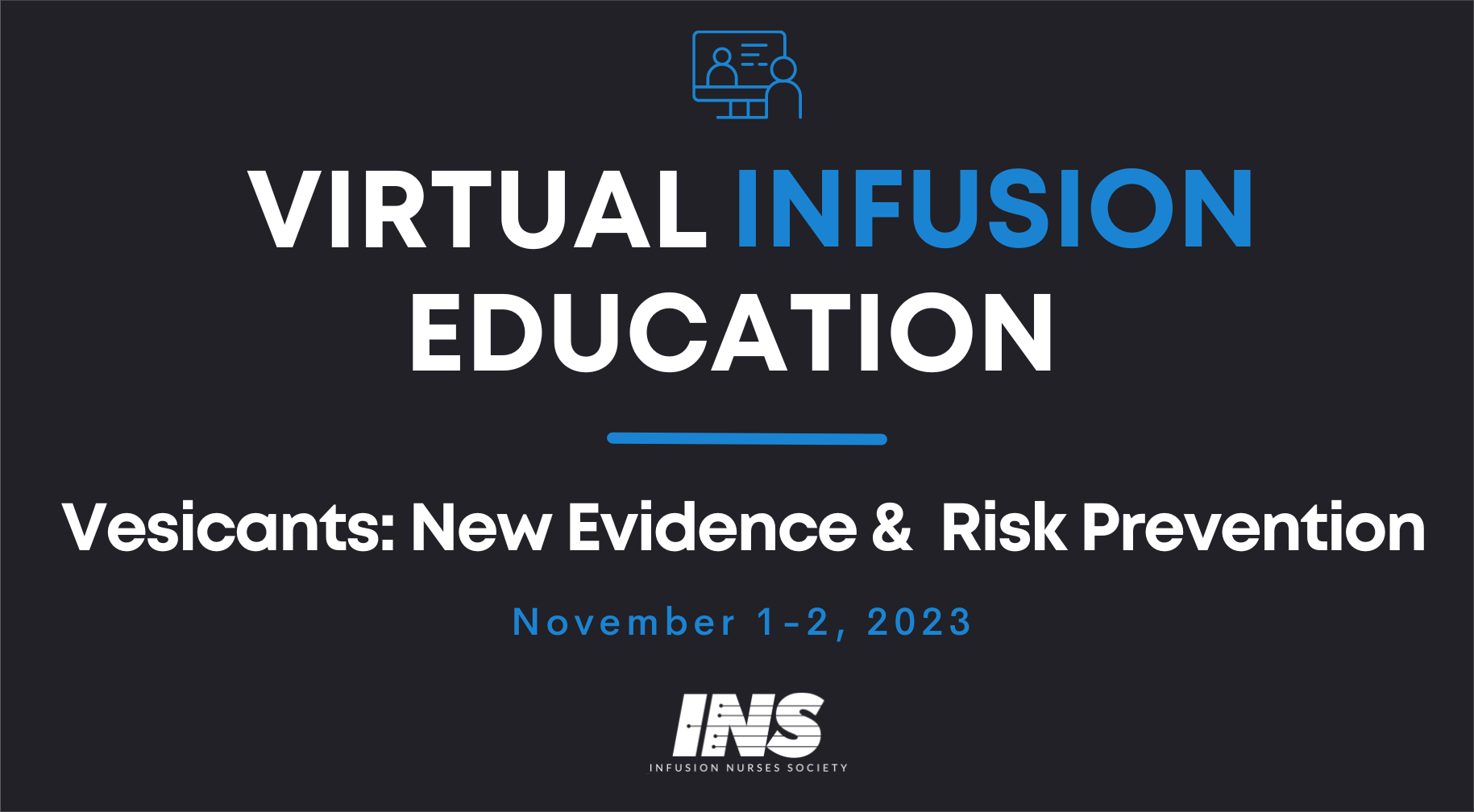
Learning Center
Identifying Vesicants
Extravasation injuries are preventable when clinicians identify which medications and solutions are vesicants, understand infusion-related risks, and implement preventative interventions. In a follow-up to the 2017 Vesicant Task Force development of an evidence-based vesicant list, a new task force was formed to review and update the 2017 vesicant list, identify current issues and risks relative to vesicant administration, and revise the Extravasation Prevention Checklist. This session provides an overview of the risks of extravasation and presents the updated vesicant list.
Learning Objectives: At the conclusion of this session, learners will be able to:
1. Discuss the risks and consequences of extravasations.
2. Identify vesicant medications and solutions.
3. Differentiate between the categories of high, moderate, and cautionary vesicants.
Lisa Gorski, MS, RN, HHCNS-BC, CRNI®, FAAN
Lisa Gorski, MS, RN, HHCNS-BC, CRNI®, FAAN, has worked for more than 35 years as a clinical nurse specialist (CNS) and educator for Wheaton Franciscan Home Health and Hospice, which is now Ascension at Home. As a CNS, she developed a home infusion therapy program in collaboration with the pharmacy and continues to provide infusion-related education for home care nurses as well as direct patient care. Ms Gorski received both her bachelor’s and master’s degrees from the University of Wisconsin-Milwaukee College of Nursing. She is the author of several books and more than 7 book chapters and journal articles. She is an INS past president (2007-2008), past Chair of the Infusion Nurses Certification Corporation (INCC) Board of Directors and has served as the chair of the INS Standards of Practice Committee for the 2011, 2016, and 2021 editions and Co-Chair for the 2024 Standards. Ms Gorski was also the Chair for the 2017 and 2024 INS Vesicant Task Force. She was inducted as a fellow into the American Academy of Nursing in 2006, named the CRNI® of the year by INCC, and named 2011 CNS of the Year by the National Association of Clinical Nurse Specialists. Ms Gorski speaks nationally and internationally on standards development, infusion therapy/vascular access, and home health care. Over the years, she has addressed the Standards in multiple presentations in the US, China, Europe, and Middle Eastern African and Latin American countries.
